Guide: How to Choose the Right Antifouling Paint for Your Boat
Four advantages of antifouling paint
1. Prevents fouling
Antifouling paint is used to prevent the growth of algae, mussels, sea snails, and other organisms on the boat’s hull. Heavy growth of algae or sea snails on the hull can negatively affect the weight of the boat.
2. Protects against corrosion
Antifouling paint also protects the boat’s hull from corrosion, especially if you have a boat that is made of aluminium. Corrosion is typically caused by exposure to salt water.
3. Reduces fuel consumption
Algae and sea snails attached to your hull make your boat heavier and increase friction in the water, which negatively affect fuel consumption. But since antifouling paint keeps the boat’s hull free from algae and other organisms, you get more efficient fuel consumption when you use the right type of antifouling paint.
4. Longer service life
A well-maintained antifouling paint can help extend the life of your boat by reducing the risk of corrosion and other damage caused by attached algae or shells.
Why is it important to have the right antifouling paint?
Applying antifouling paint to your boat is important for many reasons, and the type of antifouling paint you should use primarily depends on the boat’s material, what previous antifouling paint was used, environmental and legal regulations, and the country.
Two types of antifouling paint
Antifouling paints are divided into two main groups – self-polishing antifouling paints and hard antifouling paints. The film thickness of the self-polishing antifouling paints decreases as you drive in the water and helps to keep the hull free from fouling, while hard antifouling paint has an insoluble binder and is specially designed to create the least possible friction for the boat in the water.
The major difference between self-polishing and hard antifouling paint is that the film thickness of the hard antifouling paint does not decrease with use, unlike self-polishing paint. Hard antifouling paints are therefore better suited for speedboats and regatta sailboats, while self-polishing antifouling paints can be used on all types of boats.
Choose the right antifouling paint
As mentioned, using the right antifouling paint for your boat is crucial for a good boating season and for your boat to last a long time. Don’t forget to use protective equipment when painting with antifouling paints.
Read more below about the types of antifouling paints you will find in our range, along with which countries and waters they are approved for use in.
Self-polishing along the west coast
These copper oxide-based, self-polishing antifouling paints are permitted for the west coast, from Trelleborg in southern Sweden up to the border with Norway. The antifouling paint can be used on fibreglass, plywood, wood, and steel and is permitted for speeds of up to 25 knots. Do not use the antifouling paint on aluminium.
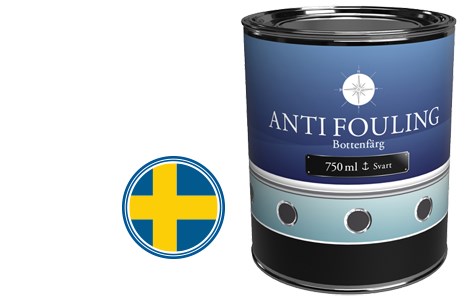

Self-polishing for the Baltic Sea
These copper oxide-based, self-polishing antifouling paints are permitted for the Baltic Sea, from Örskär just north of Stockholm to Trelleborg in the south. The antifouling paint can be used on fibreglass, plywood, wood, and steel and is permitted for speeds of up to 25 knots. Do not use the antifouling paint on aluminium.
Self-polishing for Finnish waters
These copper oxide-based, self-polishing antifouling paints are permitted in Finnish waters. The antifouling paint can be used on fibreglass, plywood, wood, and steel and is permitted for speeds of up to 25 knots. Do not use the antifouling paint on aluminium.
These self-polishings are only sold in Finland.
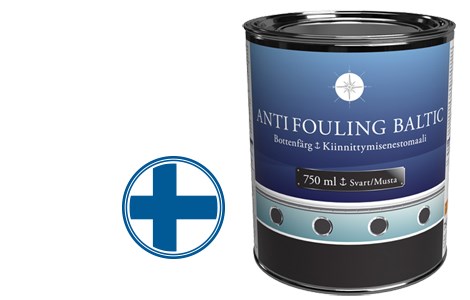
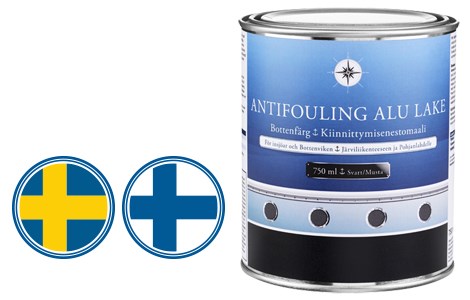
Polishing and biocide-free – for lakes and the Bay of Bothnia
These polishing, biocide-free antifouling paints are approved for areas with high environmental requirements, such as lakes and the Bay of Bothnia. The paint is biocide-free, which means it does not contain any substances that counteract fouling. The antifouling paint can be used on fibreglass, wood, plywood, steel and aluminium, and is permitted at all speeds.
Self-polishing for the Norwegian and Danish coasts
These copper oxide-based, self-polishing antifouling paints are permitted along the Norwegian and Danish coasts. The antifouling paint can be used on fibreglass, plywood, wood, and steel and is permitted for speeds of up to 25 knots. Do not use the antifouling paint on aluminium.
These self-polishings are only sold in Denmark and Norway.
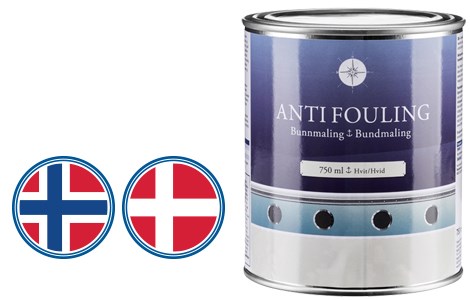
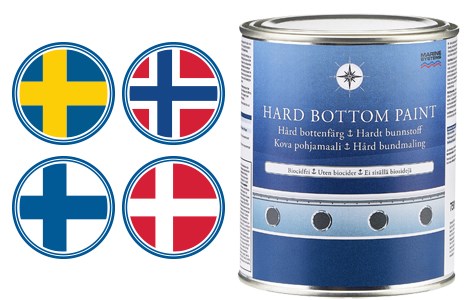
Hard and biocide-free – for lakes and the Bay of Bothnia
These hard, biocide-free antifouling paints are approved for areas with high environmental requirements, such as lakes and the Bay of Bothnia. The paint is biocide-free, which means it does not contain any substances that counteract fouling. The antifouling paint can be used on fibreglass, wood, plywood, and steel, and is permitted at all speeds. Do not use the antifouling paint on aluminium.
Dilute with Thinner No. 2
For dilution and to clean tools and brushes, you can use Biltema’s Thinner No.2.
If you apply antifouling paint in cold weather, the paint may seem thick and viscous. To make it easier to work with, you can dilute the paint with the thinner, but no more than 10%.




